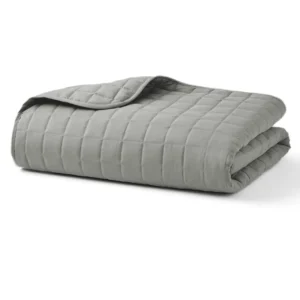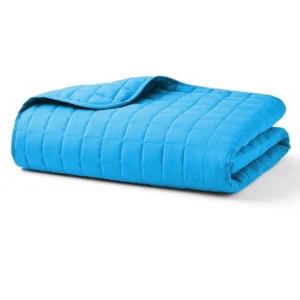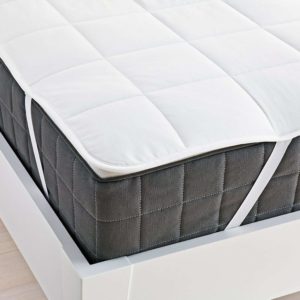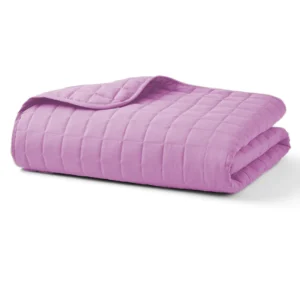The Ultimate Duvet Buying Guide
A good night’s sleep is vital for overall well-being, and choosing the right duvet plays a crucial role in ensuring restful sleep. Whether you’re looking for something cozy for winter nights or a lightweight option for warmer months, finding the perfect duvet requires a bit of knowledge about the factors that contribute to your comfort. In this Duvet Buying guide, we’ll explore everything you need to consider so you can select the ideal duvet that suits your needs
Choosing the Best Duvet: Introduction

The right duvet provides that perfect sense of comfort and warmth, making all the difference in your sleep quality and overall bedroom ambiance. With various options in terms of materials, sizes, and warmth levels, picking the best one can be a bit overwhelming. But don’t worry, we’re here to help you break down all the key considerations to help you find a duvet that keeps you snug and cozy all year long.
Factors to Consider When Choosing a Duvet
This Ultimate Duvet Buying Guide covers the most important things to consider when buying a duvet, including the type of filling, tog ratings, duvet sizes, choosing the right duvet for children, and tips on caring for your duvet. Let’s explore each of these factors;
What Type of Sleeper Are You?
Before buying a duvet, it’s helpful to determine what type of sleeper you are, as this will influence your choice of duvet:

Warm Sleeper
You tend to get hot during the night and often find yourself kicking off the covers. Warm sleepers may prefer a cooler duvet to avoid overheating.
Normal Sleeper
You rarely get too hot or cold, finding it easy to sleep comfortably in most conditions. For you, a year-round duvet that offers balanced warmth would be ideal.
Cold Sleeper
You’re always seeking extra layers and struggle to stay warm at night. Cold sleepers may need a thicker, warmer duvet to ensure they feel cozy.
If you don’t fit perfectly into one category, you might want to have duvets of different warmth levels for varying seasons. As a general rule:
Warm Sleeper = Light warmth duvet
Normal Sleeper = Year-round duvet
Cold Sleeper = Extra warm duvet
Duvet Filling
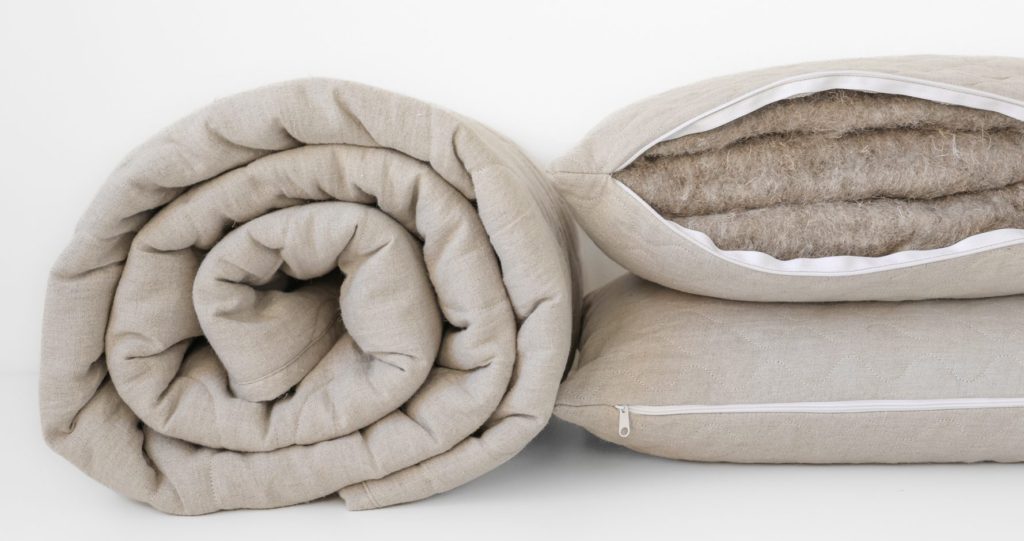
Duvets come with different types of fillings, each offering a unique sleeping experience. Fillings are generally categorized into natural and synthetic:
Natural fillings
These include down, silk, bamboo, and wool. Down is the soft, fluffy layer of feathers from ducks or geese, and it offers excellent insulation. Goose down is warmer and loftier, while duck down tends to be lighter and cooler. Silk and bamboo are hypoallergenic and ideal for those with allergies or sensitive skin. They are also effective at moisture-wicking, making them great for warm sleepers. Wool, on the other hand, is a natural insulator and can absorb a significant amount of moisture, making it a fantastic option for maintaining a cool, dry sleep environment.
Synthetic fillings
Microgel is a popular synthetic alternative to down, offering affordability and hypoallergenic properties. However, it tends to be heavier, as it requires more filling to provide the same warmth as natural down.
What is a Tog Rating?
TOG (Thermal Overall Grade) measures a duvet’s warmth level. The higher the tog rating, the warmer the duvet. Understanding tog ratings is key to choosing a duvet that fits your climate and sleeping habits.
| Tog Rating | Description | Best For |
|---|---|---|
| 1 - 7 tog | Lightest and coolest duvets | Summer, warm climates |
| 10.5+ tog | Warm and thick duvets | Winter, colder climates |
| Around 10 tog | Medium warmth, good for all-year use | Year-round comfort without switching |
| All-Season Duvet | Versatile duvets for balanced warmth & cooling | Suitable for both summer and winter |
Understanding TOG Rating
When buying a duvet, one of the most important things to consider is how warm it will keep you, especially during the colder winter months. This is where the tog rating comes into play. If you’ve ever looked at duvet packaging, you’ve probably noticed the tog rating mentioned prominently. But what exactly does it mean? Essentially, the tog rating tells you how well the duvet traps warm air around your body, keeping you cozy throughout the night.
The tog scale ranges from 1 tog (which is the lightest and coolest) to 15 tog (the warmest and thickest). If you’re looking for a duvet to keep you cool during the summer, you’ll want something between 1 and 7 tog. But when winter rolls around, you’ll likely need something with a tog rating of 10.5 or higher to stay comfortably warm.
That said, buying multiple duvets for each season might not be practical for everyone. If you’d prefer one duvet to use all year round, going for a duvet around 10 tog can be a good middle ground—it’ll keep you warm in winter but not overly hot during the summer. There are also all-season duvets designed to be versatile and provide a balance of warmth and breathability, but we’ll cover those a little later.
Now, here’s something important to keep in mind: the weight of a duvet doesn’t necessarily match its warmth. This can be confusing! Duvets filled with feathers or down have naturally better thermal properties compared to synthetic options, meaning they don’t need as much filling to keep you warm. As a result, down duvets often feel lighter, even though they might have a higher tog rating.
If you’re considering a silk duvet, it’s good to know that they don’t use tog ratings. Instead, they’re measured by the weight of the silk in grams per square meter (gsm). As a rough guide, a 250gsm silk duvet is similar to a 2-4 tog rating, 400gsm equals around 7-9 tog, and a 600gsm silk duvet is roughly the same as a 10-13 tog rating.
Pro tip: If you live in a place with distinct seasons and have the storage space, investing in a couple of duvets with different tog ratings is a great idea. But if you want a simpler solution, our all-season duvets combine the best of both worlds—they’re designed to give you warmth when it’s chilly and breathability when it’s warmer, so you can use them year-round.
What Duvet Size Should I Buy?
When it comes to choosing the size of your duvet, several factors come into play: mattress size, your sleeping habits, and whether or not you share a bed. A good rule is that the duvet should be at least 12 inches longer and 16 inches wider than your mattress to ensure full coverage. Here’s a handy guide for selecting the right duvet size:
– Double bed: 200 x 200 cm or 240 x 220 cm
– Queen size bed: 240 x 220 cm or 260 x 240 cm
– King size bed: 260 x 240 cm or 280 x 240 cm
– Super king size bed: 280 x 240 cm
For couples, if one partner frequently pulls the duvet away, opting for a larger size can help ensure both stay covered throughout the night.(https://www.parachutehome.com/blog/duvet-cover-guide)
Choosing the Right Duvet for Children
When selecting a duvet for your child, it’s important to note that children under 12 months should not use duvets due to the risk of overheating. For older children, look for duvets with lower tog ratings, as their bodies are less capable of regulating temperature. Natural-fiber duvets, such as those made from wool, cotton, bamboo, or silk, are hypoallergenic and excellent for regulating body heat, making them a great choice for children.
Lightweight materials like bamboo and synthetic fibers work well for children who like to feel free, while wool and silk provide a heavier, comforting feel, which may help children prone to anxiety or restlessness. For added comfort, weighted duvets are also available.
-
₦60,000 – ₦70,000Price range: ₦60,000 through ₦70,000
Dark Purple Quilted Blanket
Select options This product has multiple variants. The options may be chosen on the product page -
₦60,000 – ₦70,000Price range: ₦60,000 through ₦70,000
Dark Chocolate Quilted Blanket
Select options This product has multiple variants. The options may be chosen on the product page -
₦60,000 – ₦70,000Price range: ₦60,000 through ₦70,000
Blue Quilted Blanket
Select options This product has multiple variants. The options may be chosen on the product page -
₦42,000 – ₦95,400Price range: ₦42,000 through ₦95,400
Duvet Quilt
Select options This product has multiple variants. The options may be chosen on the product page -
₦60,000 – ₦70,000Price range: ₦60,000 through ₦70,000
Silver Quilted Blanket
Select options This product has multiple variants. The options may be chosen on the product page -
₦60,000 – ₦70,000Price range: ₦60,000 through ₦70,000
Ash Quilted Blanket
Select options This product has multiple variants. The options may be chosen on the product page -
₦60,000 – ₦70,000Price range: ₦60,000 through ₦70,000
Sky Blue Quilted Blanket
Select options This product has multiple variants. The options may be chosen on the product page -
₦42,000 – ₦69,000Price range: ₦42,000 through ₦69,000
Side Elastic Mattress Protector
Select options This product has multiple variants. The options may be chosen on the product page -
₦60,000 – ₦70,000Price range: ₦60,000 through ₦70,000
Teal Green Quilted Blanket
Select options This product has multiple variants. The options may be chosen on the product page -
₦60,000 – ₦70,000Price range: ₦60,000 through ₦70,000
Onion Quilted Blanket
Select options This product has multiple variants. The options may be chosen on the product page
Caring for Your Duvet
Proper care can extend the life of your duvet, keeping it fresh and fluffy for years. Here are a few simple tips to help maintain your duvet:
Daily Care: Shake your duvet regularly to keep the filling distributed evenly and to maintain its loft.
Avoid Vacuuming: Vacuuming can damage the filling, reducing the duvet’s warmth and comfort.
Drying Tips: When washing your duvet, tumble-dry it with dryer balls to help fluff up the filling and restore its loft. This will keep it feeling light and cozy.

How to Revamp an Old Duvet
If your old duvet has lost its appeal but you don’t want to part with it just yet, here are a few ways you can give it a fresh new look and purpose:
- Deep clean it: Wash the duvet according to care instructions to restore freshness.
- Change the cover: A new duvet cover in a vibrant or neutral tone can instantly transform its appearance.
- Fluff up the filling: Give it a good shake or tumble-dry with dryer balls to redistribute the filling.
- Patch up any damage: Small tears or holes can be easily repaired with fabric patches.
- Use it as an extra layer: Layer the old duvet under a new one for added warmth during colder months.
- Repurpose it: Get creative and turn it into smaller blankets, cushions, or even pet bedding.
Conclusion
Now You Are a Duvet Expert!
With this knowledge, you are more equipped to find the perfect duvet that meets your specific sleep needs. Whether you’re seeking year-round comfort or specialized warmth, investing in the right duvet can significantly enhance the quality of your sleep. Don’t forget to care for your duvet properly to ensure it lasts for many more cozy nights to come.







